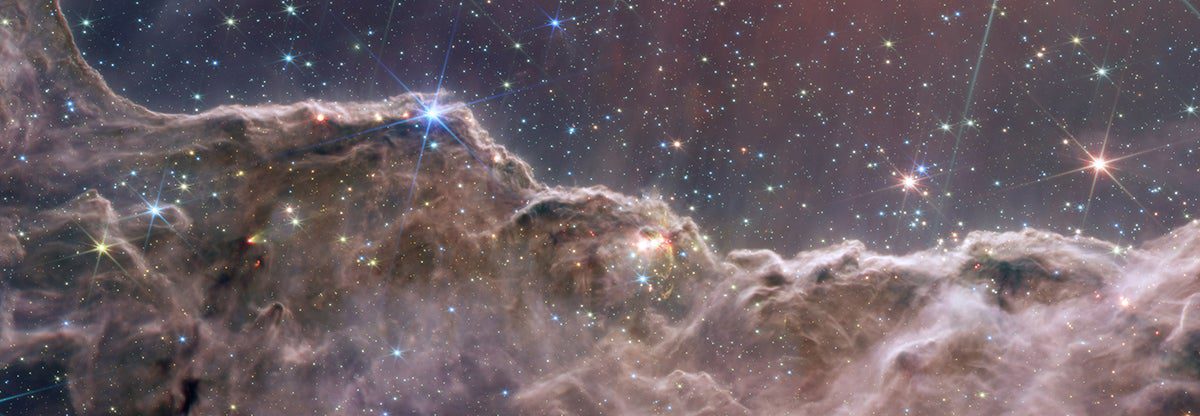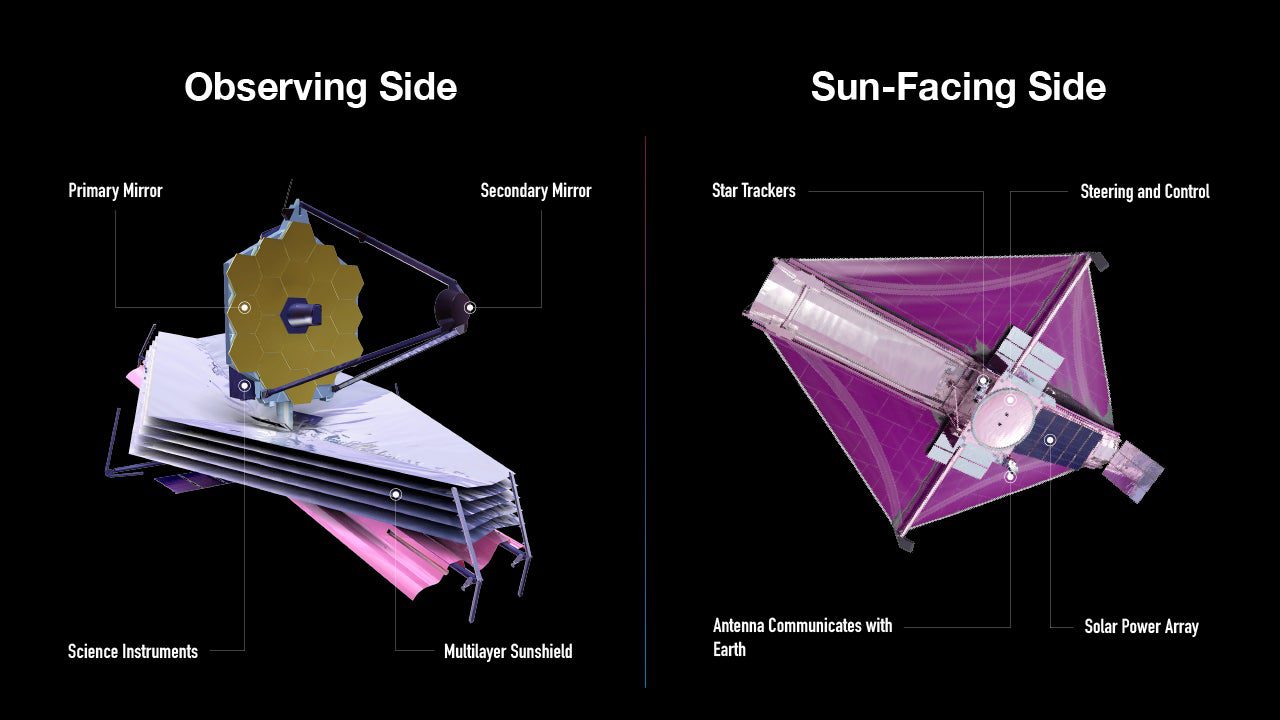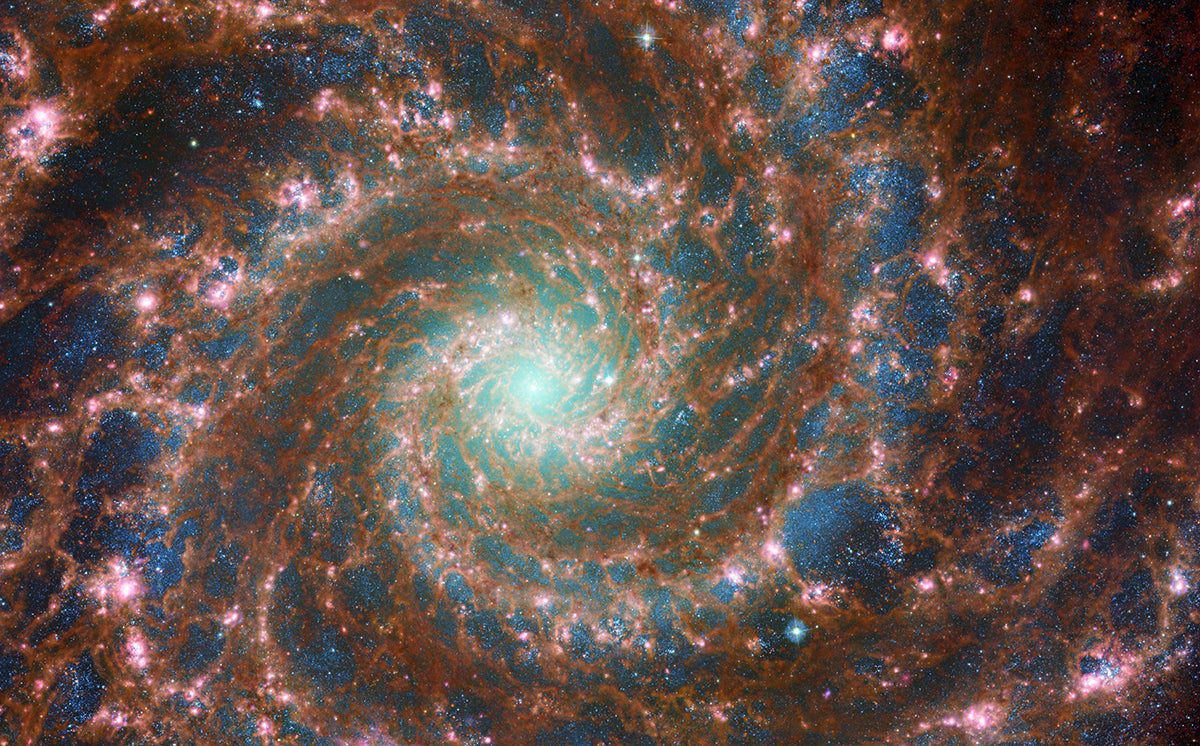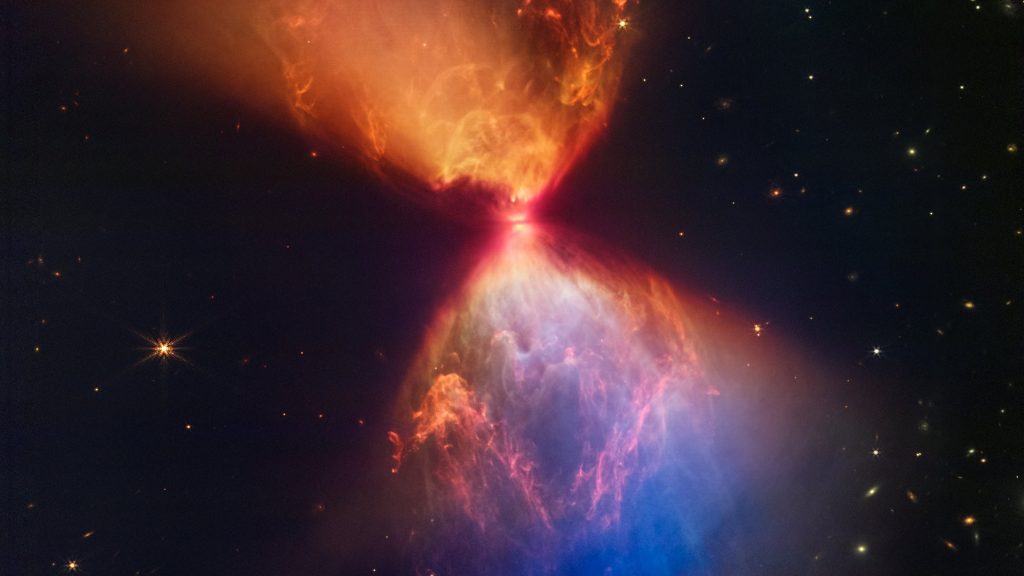In the new IMAX film Deep Sky, a A young star shines from the middle of a dark cloud, a ghostly galaxy spins, and the dusty space clouds of the Cosmic Cliffs of Carina stand tall like peaks of mountains. Also, scientists become emotional. The film focuses on the James Webb Space Telescope’s visual legacy and the people involved. At one point, NASA astrophysicist Amber Straughn gets to the heart of why seeing the Cosmic Cliffs of Carina is such an emotional journey. “This has always been there. It’s always been out there, but we’re just now able to see it. We now have this new telescope that’s opened up our eyes to let us see something we haven’t seen before.”

produce a never-before-seen view of a region where stars form in the Carina Nebula. Captured in infrared light by the Near-Infrared Camera (NIRCam) and Mid-Infrared Instrument (MIRI), this combined image uncovers previously unseen areas of star birth. CREDIT: NASA/ESA/CSA
While not as difficult as building a space telescope, making Deep Sky presented a new challenge to the filmmakers, Nathaniel Kahn noted: “…Every time we’d start to get close to finishing, NASA would release a new amazing image, and we’d have to find a way to work that in!” As the film’s writer, director, and producer, Kahn and team were finishing the project in September of 2023, combining digital cinematography by NASA, ESA, and commercial satellite launch company Arianespace with animations and graphics created specifically for IMAX. If you want to see the stereotypes of the stoic scientists challenged and bask in the glory of space, you can catch the IMAX experience starting Friday, April 19.
The drive to uncover the mysteries of the universe drives this new telling of JWST’s unfolding story. Here’s what it took to get there.
‘It was waving goodbye’
In the almost two years since those initial images were beamed back to planet Earth, it’s easy for casual observers to forget how unlikely it was. JWST was initially supposed to launch in 2011 and congress even tried to cancel it that same year over budget concerns. It ultimately involved 10,000 people from 14 countries, $10 billion, and 20 years to complete.
JWST images display the swirling arms of 19 spiral galaxies.]
“I’ve worked on JWST for 15 years and I’m sort of one of the younger ones working on this telescope,” Straughn tells PopSci. “We faced a lot of challenges along the way and it was an audacious mission. We had to build this enormous telescope that had to be cold and that had to unfold in space. When you describe it, it sounds impossible.”
Multiple new technologies had to be created to get this game-changer off the ground, including a crucial sunshield. Since JWST primarily observes infrared light from faint and very far away objects. It must be kept extremely cold, at about -370 degrees Fahrenheit, to detect these faint signals of heat. The team constructed a five-layer sunshield about the size of a tennis court that shields it from other heat sources like the Earth, sun, and various moons. In the documentary, Amy Lo, the Deputy Director for Vehicle Engineering on JWST for Northrop Grumman, described it as being “SPF one million,” to keep it so cold and protected. She noted that there was no “second shot of doing this.”

During its set off on December 25, 2021, JWST completed over 40 important setups of its various instruments and overcame 344 “single point failures.” If any one of those single points had failed, the entire mission would have ended.
The mission successfully dealt with all 344 single point failures and even received an unexpected bonus. Around 45 seconds into the launch, they saw the telescope’s power source, known as the solar array open up. This confirmed that JWST had power and the setup was not something the team expected to witness during the launch. NASA JWST Program Scientist Eric Smith expressed, “It was waving goodbye,” in the documentary.
Returning to the beginning of the universe
According to multiple reports, JWST is performing better than initially anticipated. It’s enduring the micrometeoroids–tiny pieces of space dust that can accumulate on the telescope’s mirrors. The team had a good understanding of how often the dust would hit the mirrors, but the size of the impacts was more surprising.
NASA scientists were surprised by the presence of a 3,000-mile-long jet stream on Jupiter.]
“In order to help reduce this, we have essentially changed the way we are operating so that the telescope is facing away from the direction the micrometeoroids are coming from, when we expect higher impacts,” Straughn explains. PopSci.
It has also proven to be more steady and efficient overall. According to Straughn, JWST has provided more data in less time than initially expected, revealing some of the most remote galaxies in the universe. These are galaxies that formed shortly after the big bang approximately 13.8 billion years ago. JWST has revealed that many are brighter, larger, and more abundant than astrophysicists previously thought, and their black holes are also growing at an incredibly rapid rate.

“There’s a new overarching mystery as to why galaxies are growing so large,” says Straughn. “When we encounter the unexpected, it presents a new problem to solve that will contribute to our understanding of how the universe operates.”
Looking ahead
JWST has built upon the achievements of the Hubble Space Telescope and other observational projects are on our horizon. Scheduled for launch in 2027, the Nancy Grace Roman Telescope will investigate exoplanets and dark matter. The Habitable Exoplanet Observatory (HabEx) is also in the early stages of development and will be specifically designed to detect life on other planets.
In a new NASA video game, you play as a telescope searching for dark matter.]
“I believe that this telescope’s launch and these images have come at a perfect time to provide a contrast to the negative events occurring in the world,” says Straughn. “It truly exemplifies something positive, showcasing what we humans can achieve when we dedicate ourselves to a greater purpose.”
Deep Sky comes out in IMAX cinemas all across the country on Friday, April 19.









